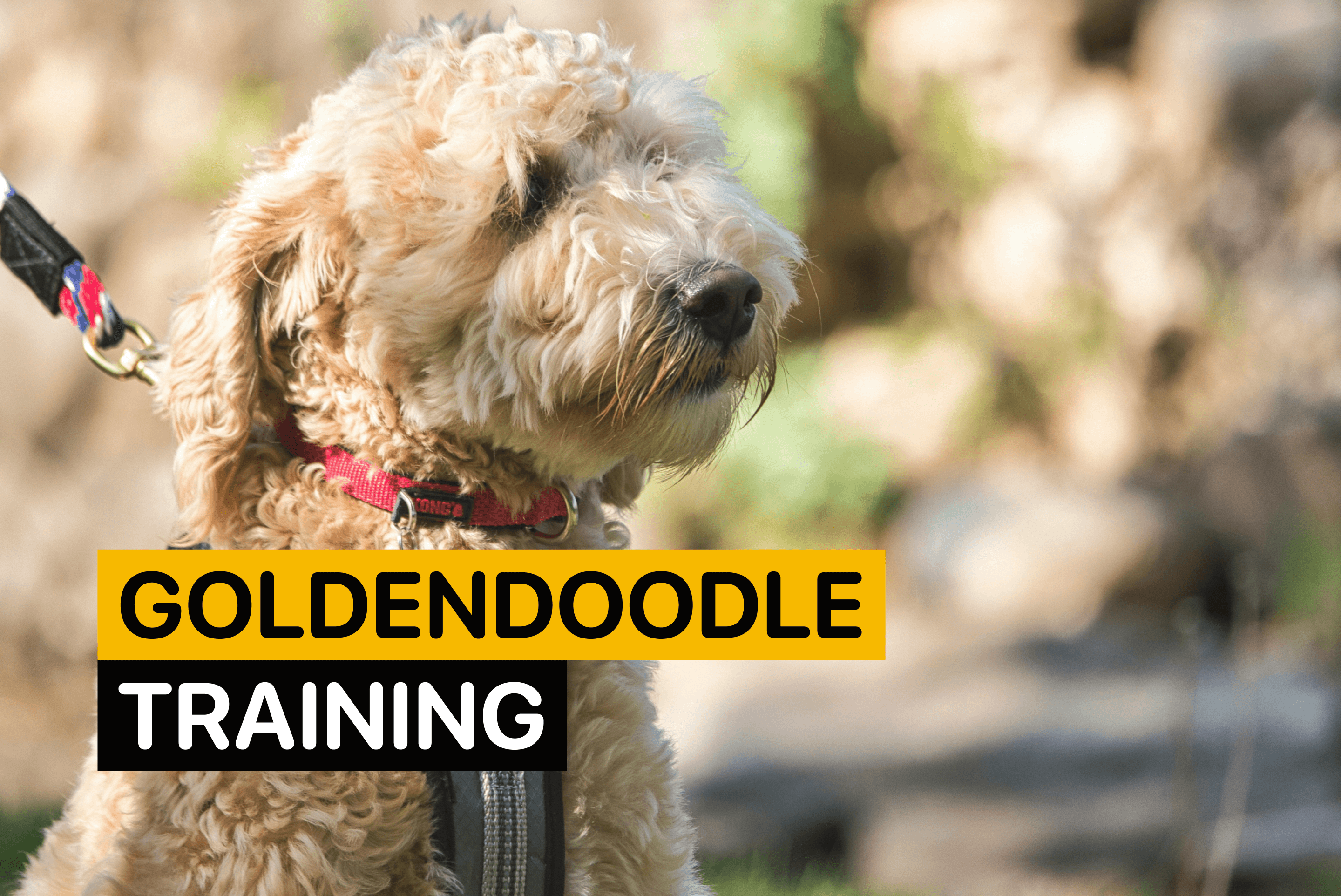How to Train a Golden Retriever: Breed-Specific Considerations

By
Woofz Team Updated on |Reviewed by Shannon Kenny
Key Takeaways
- Golden Retrievers are friendly, loyal, easy to train, and very intelligent dogs, making them excellent family companions
- The breed has high energy levels, so a lack of proper exercise can lead to an increase in destructive behaviors
- Though typically friendly, Goldens can show aggressive behaviors, especially if not socialized properly
- Golden Retriever owners should work on training polite behaviors and good manners, since jumping and mouthing are common in high-energy retrieving dogs.
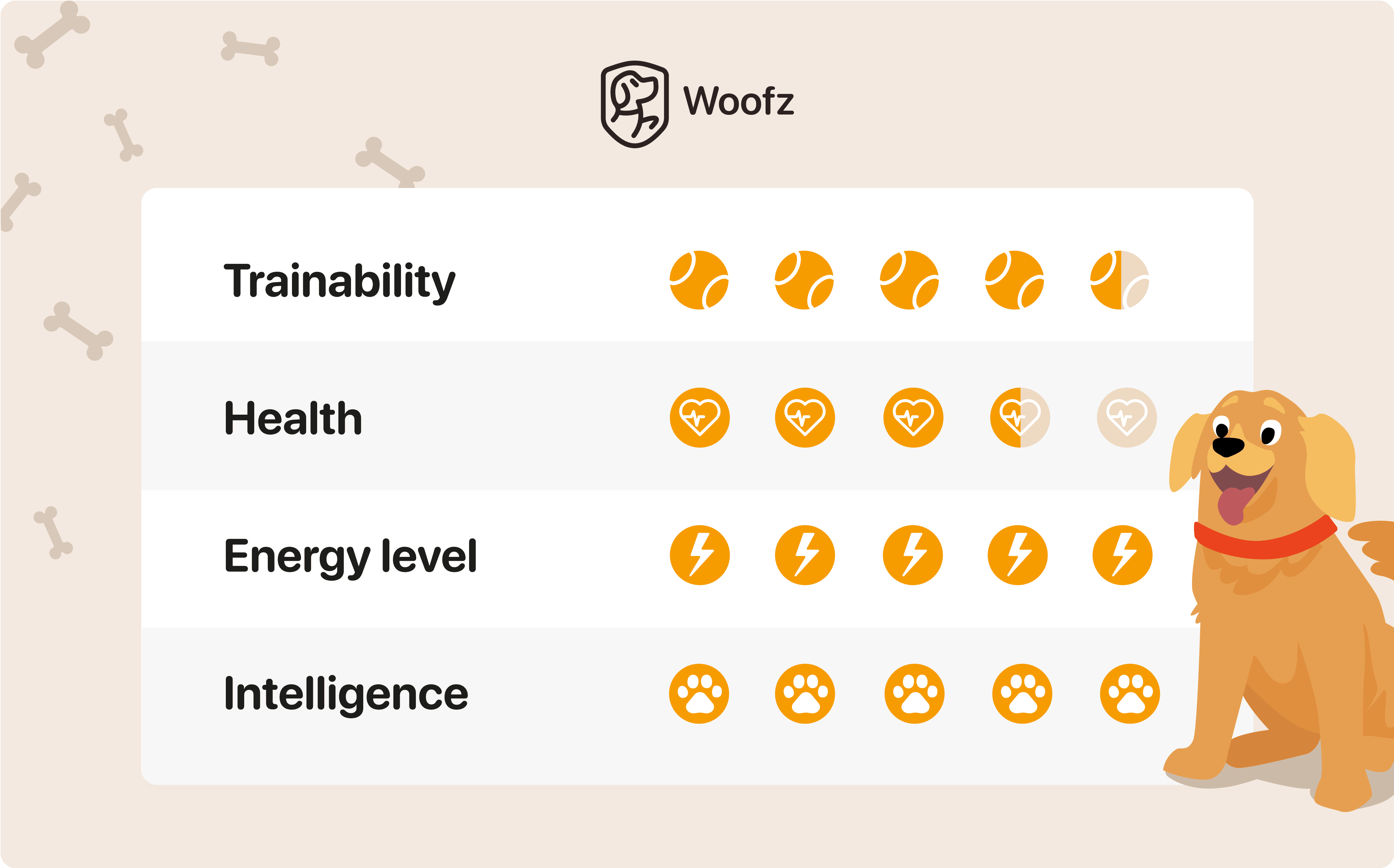
Golden Retriever Temperament and Characteristics
Many dog owners choose Golden Retrievers as the ultimate family dogs, and their desire to add this breed to their family dynamics is understandable. Docile, affectionate, and intelligent, Golden Retrievers are also clever and trainable, which makes them excellent companion dogs. No wonder they’re consistently among the top five most popular dog breeds in the USA (according to AKC).
Despite these positive traits, it’s good to investigate the breed’s characteristics before adopting Golden Retriever puppies to ensure they fit well with your lifestyle.
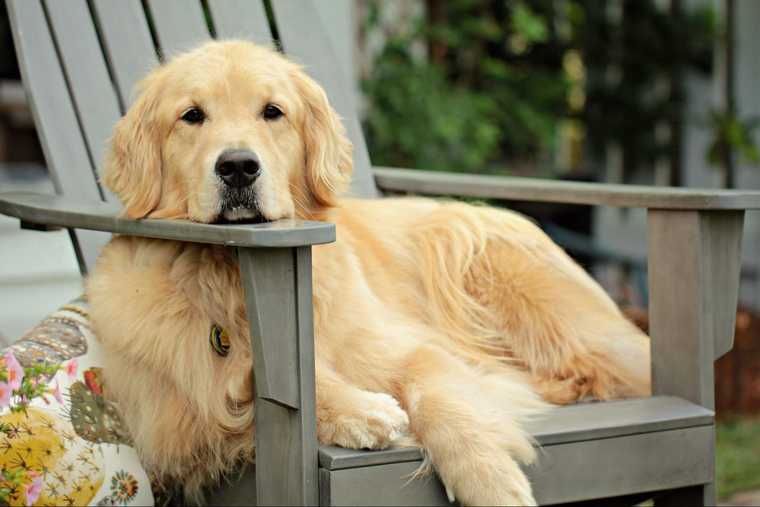
Activity Level
Golden Retrievers were originally bred as hunting companions, so they have a natural passion for outdoor pursuits. Their energy levels are relatively high, and unless appropriately channeled, can lead to a variety of destructive behaviors. However, patience, obedience training, and regular physical exercise help keep these dogs well-behaved.
Temperament
Golden Retrievers are renowned for their incredible friendliness and loyalty. They’re service dogs at heart, who thrive when demonstrating their skills in hunting, dog sporting events, search-and-rescue missions, or as an emotional support animal. They’re also highly adaptable and consistently deliver excellent results in training, thanks to their intelligence and affinity for social interactions.
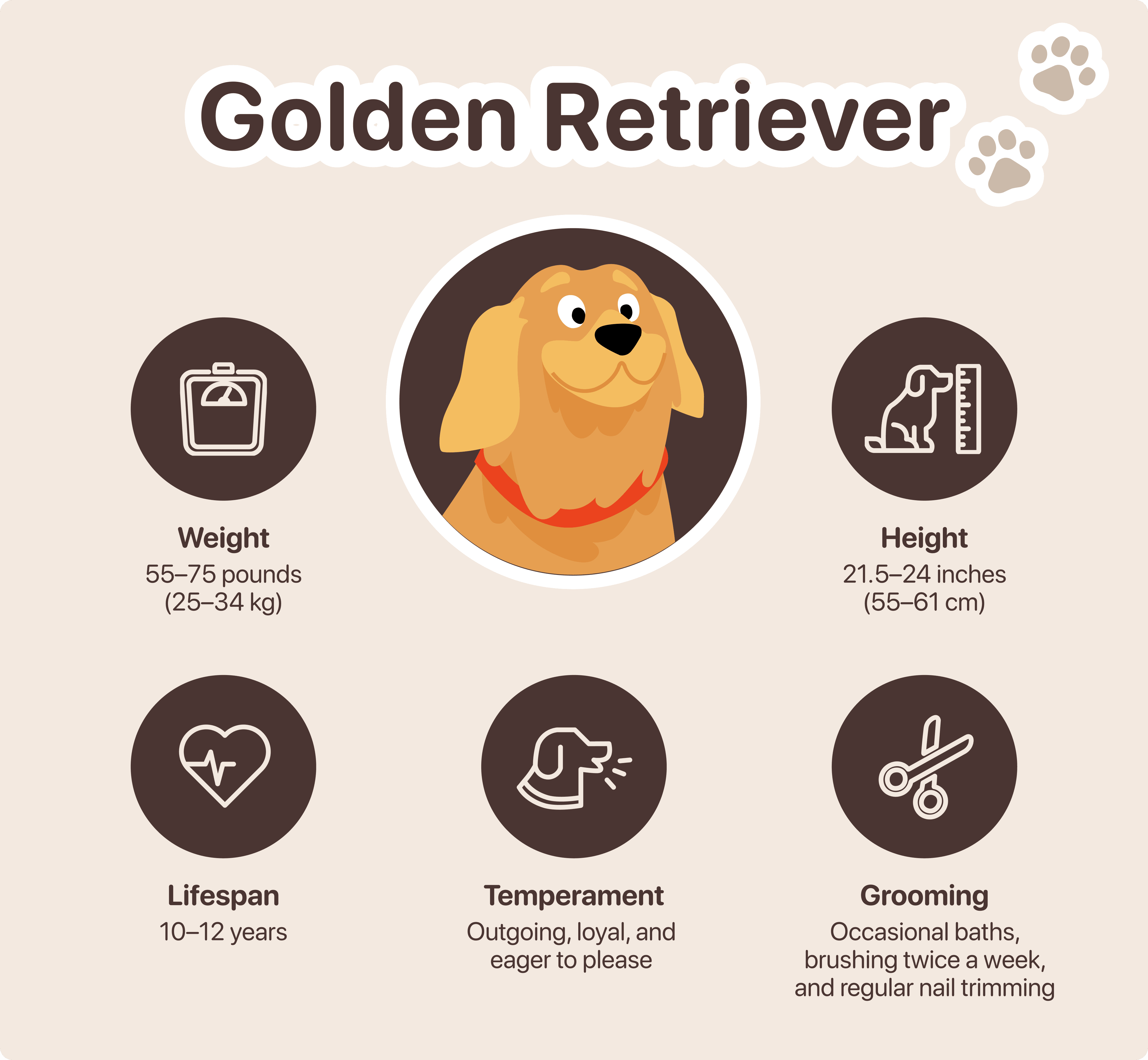
Are Golden Retrievers Easy to Train?
Golden Retrievers are generally easy to train.

This is due to their high intelligence and affinity for humans, which makes them susceptible to positive reinforcement methods. Early introduction to obedience dog training, combined with a consistent approach to learning new skills and commands, helps you raise well-behaved adult dogs and minimize destructive tendencies.
5 Practical Tips on How to Train a Golden Retriever
Now, let’s move to some practical tips on Golden Retriever training. Despite their outgoing nature and high trainability, owners of these dogs may face some breed-specific behavioral challenges. Knowing how to tackle them is essential for a peaceful life together.
1. Prevent fear-based aggression
The breed is widely celebrated for its calm disposition; however, not all Golden Retrievers are friendly at all times. In some cases, they may exhibit aggressive tendencies, especially dogs that were not properly socialized.
So, it’s vital to introduce your Golden Retriever pup to other people and environments as early as 3–16 weeks in a controlled way that allows your puppy to set the pace.
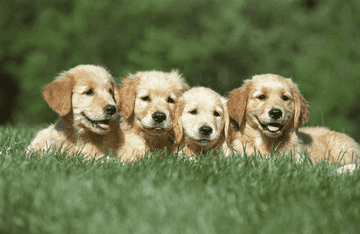
It’s also worth mentioning that some dogs simply have a genetic predisposition to being grumpier, more anxious, or aggressive than others. In such cases, consulting a professional trainer is advisable, as they can develop customized training strategies to help your furry friend overcome any setbacks.
2. Work on resource guarding
Another common scenario in which a Golden can become aggressive is when they compete for food, toys, or their “den” (a designated sleeping and resting area). Such attempts to protect objects and places are called resource guarding. The behavior is innate and natural for many dogs, but you can reduce it by implementing some rules for interacting with your pooch.
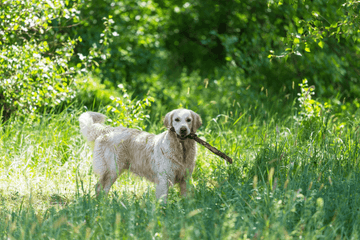
First, start feeding your dog in a separate room, away from other pets (and make sure no one bothers them while they’re eating). Next, you can teach your furry companions to trade things, rather than just taking them away. For example, if your dog chews on your shoe, don’t simply take it away. Instead, offer your dog a high-value toy to chew on.
3. Manage mouthiness
As a breed developed for hunting and retrieving purposes, Goldens are prone to carrying objects and chewing on them. The behavior is typical for pups, but sometimes it persists into adulthood and can become destructive. The best way to tackle the problem is by redirecting the behavior and offering safe chew toys to satisfy their instinctive desire to chew.
Other ways to deal with mouthiness are:
- Sufficient physical and mental stimulation
- Reinforcing chewing on toys, not household objects
- Bite inhibition dog training
- Consistency between every interaction.
4. Avoid overstimulation to prevent reactivity
It’s common for dogs with high energy levels to get overstimulated when they lack proper physical and mental exercise. As a result, they may exhibit unwanted behaviors such as barking, excessive panting, restlessness, and hyperactivity. Inconsistent Golden Retriever training can be another reason why your pooch gets confused in different environments and struggles to understand what behavior is expected of them.
To help an overstimulated Golden calm down:
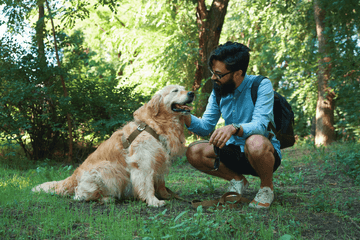
- Ensure they get enough physical and mental stimulation daily
- Introduce them to basic obedience training to redirect and manage their behavior
- Establish a clear and consistent routine
- Arrange a quiet spot in your house where they can rest and relax when overwhelmed.
5. Discourage your dog from jumping
Jumping is a natural behavior for Goldens, given their tendency for high energy levels. They can use it as a form of attention-seeking behavior, but it doesn't mean you have to tolerate this habit. The most effective way to change it depends on the reason why your dog is jumping on you.
If you suspect this is a learned form of greeting, once you get home, you can teach them an alternative way to recognize your presence. Using the “Sit” command is one of the possible solutions to teach your furry companion an acceptable alternative. Additionally, it’s recommended to avoid jumping in any form, as this can reinforce the habit by providing the attention your dog requests. Some dogs jump during play so it’s recommended to keep toys low. Play ends if the dog jumps on you.

How Much Exercise Does a Golden Retriever Need?
Golden Retrievers thrive with at least two hours of proper physical exercise per day. It’s best to spread this time throughout the day and provide opportunities for various activities. They can include outdoor walks (and running), playtime (particularly retrieving games, such as fetch), and training.

Wrap Up
Golden Retrievers are excellent companions, known for their friendly and loyal personalities. However, this is a high-energy breed, so you must ensure they get sufficient mental and physical stimulation to prevent destructive behaviors. Early socialization and obedience training are also effective in managing their behavior and raising a happy, well-mannered family dog.

